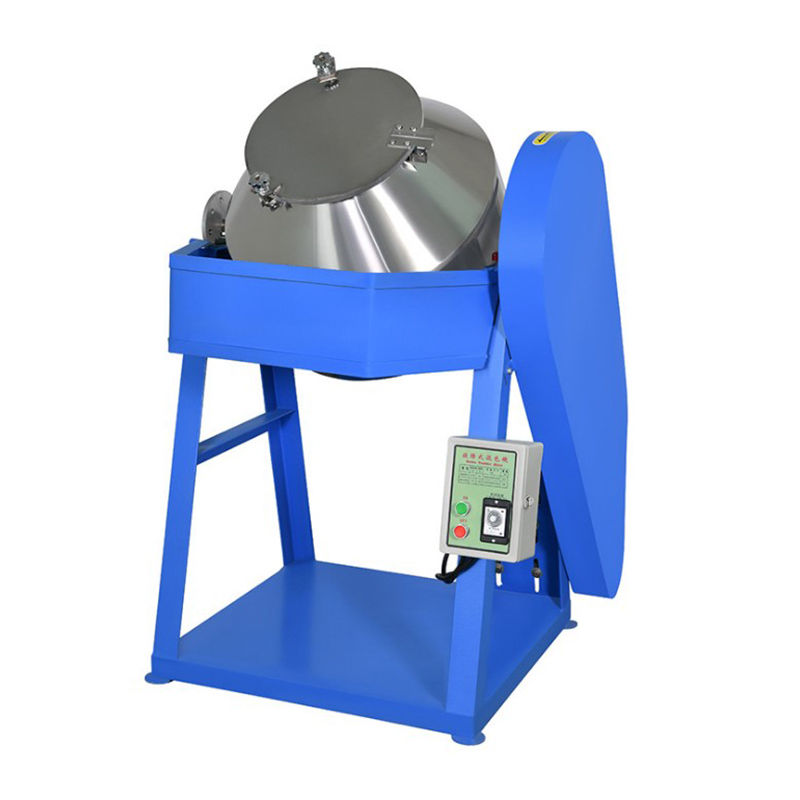Types of plastic mixers
2024-01-17
A plastic mixer is a type of industrial machinery designed for mixing and blending plastic materials during the manufacturing process. These mixers play a crucial role in the plastic processing industry, helping to achieve uniform distribution of additives, colors, and other components within the plastic resin. The mixing process is essential for ensuring the quality and consistency of the final plastic product.
Here are some common types of plastic mixers:
1. Single-Shaft Plastic Mixer:
- Single-shaft mixers have a rotating shaft with mixing blades or paddles. They are suitable for mixing a variety of plastic materials, including powders, granules, and pellets. The mixing action helps homogenize the plastic components.
2. Double-Shaft Plastic Mixer:
- Double-shaft mixers have two parallel shafts with mixing elements. The counter-rotation of the shafts provides a more intense and thorough mixing action. These mixers are often used for high-capacity production and demanding mixing applications.
3. Vertical Plastic Mixer:
- Vertical mixers have a vertically oriented mixing chamber. They are commonly used for mixing plastic pellets and granules. The design allows for efficient material movement and blending.
4. Horizontal Plastic Mixer:
- Horizontal mixers have a horizontally oriented mixing chamber. They are suitable for mixing plastic materials in various forms, including powders and granules. Horizontal mixers may have single or multiple mixing shafts.
5. High-Speed Mixer:
- High-speed mixers are designed for applications where rapid mixing and blending are required. They often feature high-speed rotating blades or paddles to achieve efficient mixing in a short period.
6. Cooling Mixer:
- Cooling mixers are used to cool plastic materials after they have been processed. They often combine mixing and cooling functions to achieve the desired material temperature for subsequent processing steps.
7. Heating Mixer:
- Heating mixers are designed to heat plastic materials during the mixing process. This is useful for applications where temperature control is critical for achieving specific material properties.
8. Batch Mixer:
- Batch mixers process a fixed quantity or batch of material at a time. After mixing is complete, the batch is discharged, and a new batch can be introduced. This type of mixer is suitable for smaller-scale production.
9. Continuous Mixer:
- Continuous mixers operate continuously, allowing a constant flow of material through the mixing chamber. They are often used for high-volume production and can provide a more continuous and efficient mixing process.
10. Planetary Mixer:
- Planetary mixers have multiple mixing blades that rotate around the central axis and also revolve around the mixing chamber. This complex motion ensures thorough mixing and blending of materials.
Key considerations for plastic mixers:
- Capacity:
- The capacity of the mixer should match the production requirements, and it is often specified in terms of the volume or weight of material that can be processed per batch or per unit of time.
- Material Compatibility:
- Ensure that the mixer is compatible with the types of plastic materials and additives used in the manufacturing process.
- Mixer Configuration:
- Consider the specific design and configuration of the mixer, including the number of shafts, mixing elements, and the overall geometry of the mixing chamber.
- Control Systems:
- Advanced mixers may come with control systems that allow users to adjust mixing parameters, monitor performance, and optimize the mixing process.
- Maintenance and Cleanability:
- Easy access for cleaning and maintenance is important for keeping the mixer in good working condition and preventing cross-contamination between batches.
Plastic mixers are essential equipment in the plastic processing industry, contributing to the production of a wide range of plastic products with consistent quality. The choice of the appropriate mixer depends on the specific requirements of the manufacturing process.



